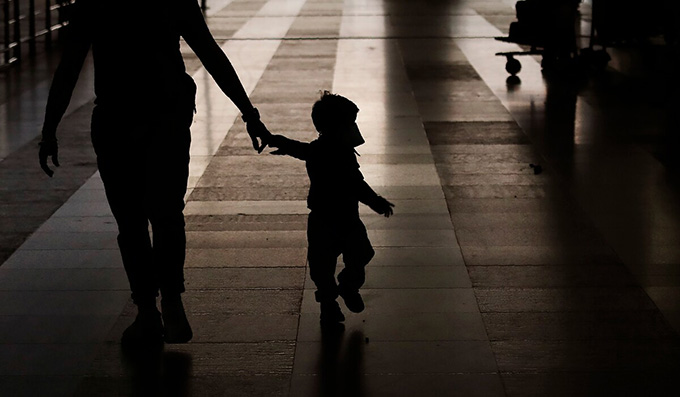
The return to school in September 2020, and the 2020–2021 academic year, were marked by thermometers, masks, bubble groups, strict measures for entrances and exits, marked routes within educational centers, absence of exits and excursions, and safety distances in everything and for everything.
A situation that, although the 2021–2022 academic year was somewhat calmer, required a great effort for the entire educational community.
Three years have already passed (or only), and it seems that the new course started in September is similar to those before the pandemic. But there is something different: the “pandemic generation”, the boys and girls born during confinement, begins their schooling.
How it has affected the little ones
We have been able to observe throughout these years how the pandemic and, above all, its management have conditioned the learning of students, regardless of their age and studies. The human rights observatory ( Human Right Watch ) already reported in 2021 the global impact that the pandemic could have on education.
Although now it seems that the situation is normalized, we must not forget that a single year in the life of the youngest children is a lot. And this is especially observed in the course that starts this year. When the boys and girls who will be 3 years old in 2023 were born, they did so in a situation not only of a pandemic, but of extreme confinement that meant great isolation from others.
It is true that it allowed, in most cases, the first months of parenting to be of more intense support than that allowed by maternity or paternity leave. But it also meant that contact with other family and friends occurred through screens and an internet connection.
Apart from the essential contact with their fathers and mothers, there were no glances, interactions, friction, caresses, the salty taste of crying, the vibration of smiles and voices, nor contact with other bodies, beyond what the screens offered.
To make matters worse, in daycare and early childhood education, a global delay in the acquisition of speech and in all aspects linked to communication had already been observed for a few years, as corroborated by a study on the effects of the pandemic on language development in the first two years of life . The growing lack of autonomy of boys and girls was beginning to be worrying. And they began to insist on the need to create shared spaces between the adult and the child. Of spending time together.
Attachment and other milestones
The construction of attachment, around 7 months, is a very important milestone in the development of any human being. That moment in which the baby cries when she is separated from her reference adults is necessary for correct development, and is regulated when she understands that she is not abandoned, that the adult will return.
A disorganized attachment is one of the causes of the child’s later poor functioning with society. During the pandemic, parents were able to share more time in the same physical space as their children: but this does not guarantee that there was the necessary interaction with the children for the development of this bond in a safe and positive way; especially when it was necessary to combine remote work, stress and concern for other family members or the situation in general.
Being together does not ensure the bond if this “being” is delegated to an object such as a computer, mobile phone or tablet. And the pandemic generation was born, precisely, at a time when the invasion of the screen as a substitute for connecting with people was taking shape.
We must also not forget that the person who initially provides the audiovisual content and facilitates its access is always the adult. It is important to be aware of the responsibility that entails.
Recover the conversation
Are we saying then that access to starting screens is harmful in itself? No. But we must take into account at what ages they are used and what are the recommendations of the World Health Organization in this regard. For children under 2 years old, no exposure to screens; from 2 to 4 years, proposes that the time dedicated to sedentary activities in front of a screen does not exceed one hour, and from 5 years of age not to exceed two hours.
The child, and later the adolescent, needs presence accompanied by attention. The pandemic devastated everything in 2020 and has left countless consequences on many people . But one of them is correctable, “curable”: recovering the time dedicated to the conversation.
The screen and its use during the pandemic allowed access to information, brought distances and people closer, and adapted to individual needs, easing the situation of confinement… But it requires the mediation of an adult who intervenes in the child’s interactions or girl with her.
The reality of the little ones has become simultaneously physical and virtual and they urgently need adults to explain, talk, pay attention, interpret what they see… Looking at screens should not be a solitary activity.
Alert and prevention
The pandemic generation and its predecessors (currently two and three years old) require special help to be able to overcome some contextual difficulties that befell them. Schooling in early childhood, from the age of two, helps them grow autonomously in the company and coexistence with others.
Everything invites us to be alert with this new generation. An alert that moves us to prevention, to the reinforcement of those aspects that promote autonomy, communicative intention, language and the complete and integral development of future adolescents who will be adults.
Being aware of the contextual difficulties with which they have entered the world is crucial to accompany them in their growth.
Author Bio: Sylvie Perez Lima is a Professor and tutor of the Psychology and Education Studies at UOC – Universitat Oberta de Catalunya
